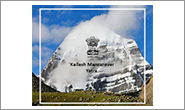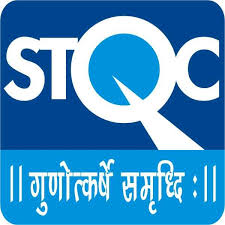Hon'ble Prime Minister's speech at Central Party School
10/24/2013
Embassy of India welcomes you to celebrate DIWALI On 10th November 2013 Snacks stalls- 5.00 pm onwards Cultural programme – 6.00 pm Dinner- 7.30 pm
Your Excellency Mr. He Yiting,
ExecutiveVice-President of Central Party School,
DistinguishedGuests,
Ladiesand Gentlemen,
I am deeply honoured at this invitation to speak at the Central Party School ofthe Communist Party of China. I am conscious of the unique place that thisSchool holds in the governance system of contemporary China and itscontribution to the remarkable transformation of Chinese society. Many of youwill play a decisive role in shaping China’s future development, which will beof great significance for the world.
I can think of no better place than this School to speak about India and China inthe new era.
Relations between India and China are unique in the world. We are two continuous ancientcivilizations. We are neighbours with a long history of cultural, spiritual andeconomic ties. We both embarked on a new phase of our political historiesaround the same time. Today, we are the world’s two most populous nations,engaged in a process of socio-economic transformation of our people on a scaleand at a pace unprecedented in human history.
Bothour countries have achieved considerable success in this endeavour. Indeed,China’s early economic reforms and impressive achievements are source ofinspiration across the developing world. After China, India has been thefastest growing major economy in the world, averaging a growth rate of 7% peryear over the past two decades and around 8% per year during the past tenyears. As a result, both our economies have expanded several times. We haveachieved a high degree of economic modernization and have lifted hundreds ofmillions of people out of poverty.
Inour own ways, we have also had an impact in shaping the global economy – Chinain the manufacturing sector and India in the services sector.
Over the past two decades, the process of economic reforms in India has gone throughthe rigour of democratic debate, and met the test of political consensus andpublic support. India’s policies have focused not only on accelerating growth,but also on making it sustainable and regionally balanced. We have emphasizednot only modernization, but also addressing the challenges of opportunities,capacity and equity for our vast and diverse population. This is the path onwhich we will continue to move forward.
Instructural terms, India’s growth is propelled by domestic demand and financedlargely by our own resources. But we are also increasingly integrated into theglobal economy. The prolonged global economic crisis has affected us, as it hasmany emerging economies. I believe, however, that this is a temporarydisruption. In recent months, we have taken measures to enhance foreigninvestment flows, speed up implementation of major projects, boostinfrastructure development, strengthen our financial markets, reform our taxsystems and make our business environment more attractive.
Oureffort is to return the Indian economy to a sustained growth rate of 7-8% perannum. We believe that the underlying fundamentals of our economy, particularlyinvestment and savings rates, are strong and consistent with this projection.
India’scritical challenges in the days ahead are precisely in areas where I seeopportunities for cooperation between India and China and I would like tohighlight eight specific areas in this regard.
One,we need to pay much greater attention to the expansion and modernization of ourinfrastructure.
Indiaplans to invest one trillion U.S. dollars in infrastructure in the next fiveyears and we would welcome China’s expertise and investment in this sector.
Two,we need to increase our agricultural productivity in order to reducerural-urban disparities in income and manage efficiently the process of massurbanization, which is a phenomenon common to both our countries. This willmean paying particular attention to the issues of water and waste management.
Chinahas significant experience of urbanization and our national planners, cityadministrators and entrepreneurs should share experiences and seek solutions indealing with the physical, social, environmental and human challenges ofmobility and urbanization.
Three,we want to draw upon China’s strength in the manufacturing sector, which isvital for providing mass employment. India, for its part, has strength inservices, innovation and certain manufacturing sectors, which can benefitChina. A linked challenge for India is in skill development, where we can learnfrom each other’s experience.
Four,as large and growing consumers of energy, we should intensify cooperation onthe shared challenges of energy security, including joint development ofrenewable energy resources, as well as working jointly with third countries.
Five,growing population, shrinking land, improving consumption levels and pricevolatility make food security a key policy priority for us. India has launcheda major legislation-based food security programme. Our two countries should pool our resourcesand expertise in this area.
Morebroadly, in an uncertain global environment, India and China can work togetherto impart stability to the global economy and sustain growth in our twoeconomies by leveraging our resources, large unsaturated demand, economies ofscale and our growing income levels.
Six,in an integrated world, economic success requires a favourable externalenvironment. In recent decades, India and China have been among the greatestbeneficiaries of an open global economy; a rule-based and open internationaltrade regime; and free flow of finance, information and technology.
However,the emerging global environment may not remain as propitious as it has been inrecent decades. We should therefore work together to make the internationaleconomic environment more conducive to our development efforts. Allow me toelaborate this point.
Afterthe prolonged global economic crisis of 2008, we face a fundamentally differentfuture for the world economy. We are in the midst of a significant and ongoingtransformation where both political and economic power is being diffused. A multi-polar world is emerging but itscontours are not yet clear.
Protectionistsentiments in the West have increased and the global trading regime may becomefragmented by regional arrangements among major countries. India and China havea vital stake in preserving an open, integrated and stable global trade regimeeven as we work together to foster regional economic integration. We shouldalso intensify our efforts to support trade and investment and reduce risks inemerging markets. The BRICS Development Bank and the Contingency ReserveArrangement are examples of such cooperative efforts. Our cooperation will alsohelp accelerate reforms in global financial institutions.
Seven,while we welcome and celebrate the rapid economic growth of our economies, wemust also confront the challenges of climate change and focus greater attentionon the safeguarding of our fragile environment. Both India and China are heirsto civilizations that value Nature and have practiced sustainability throughthe ages. However, as we meet the basic needs of our people, we also face thedanger of unfair burdens being imposed on us for mitigating climate change. Weshould ensure that the international response to climate change does notconstrain our growth and that it continues to be based on the principle ofcommon but differentiated responsibilities.
Eight,India and China have also benefited from a largely stable global order andpeaceful periphery. But we cannot take a stable political and securityenvironment in our region and beyond for granted. If we look carefully, many ofour challenges are common. Terrorism, extremism and radicalism emanating fromour neighbourhood affect both of us directly and can create instability acrossAsia. Similarly, maritime security in the Pacific and Indian Oceans is vitalfor our economies just as peace and stability in West Asia and Gulf areessential for our energy security.
Aboveall, India and China need a stable, secure and prosperous Asia Pacific region.The centre of gravity of global opportunities and challenges are shifting tothis region. In the coming decades, China and India, together with the UnitedStates, Japan, Korea and the ASEAN Community, will be among the largesteconomies in the world. While this region embodies unparalleled dynamism andhope, it is also one with unsettled questions and unresolved disputes. It willbe in our mutual interest to work for a cooperative, inclusive and rule-basedsecurity architecture that enhances our collective security and regional andglobal stability.
Whileboth India and China are large and confident enough to manage their securitychallenges on their own, we can be more effective if we work together. Regionalstability and prosperity will also gain from stronger connectivity in theAsia-Pacific region. This should be a shared enterprise of India and China.
Ladiesand Gentlemen,
I have said on several occasions that India welcomes China’s emergence. Frankly,old theories of alliances and containment are no longer relevant. India andChina cannot be contained and our recent history is testimony to this. Norshould we seek to contain others.
We both know that the benefits of cooperation far outweigh any presumed gains fromcontainment. Therefore, we should engage with each other in a spirit ofequality and friendship and with the confidence that neither country is athreat to the other. This is the essential premise of India’s externalengagement. Our strategic partnerships with other countries are defined by ourown economic interests, needs and aspirations. They are not directed againstChina or anyone else. We expect a similar approach from China.
The landmark visit of Prime Minister Rajiv Gandhi to China 25 years ago marked anew beginning in our relationship. Since then, successive leaders in our twocountries have built on that historic opening. Over this period, ourrelationship has prospered and our cooperation has expanded across a broadspectrum of areas. This is because we have managed our differences and have, ingeneral, kept our border regions tranquil. At the same time, we continue tomake progress on resolving our border dispute. Having agreed the PoliticalParameters and Guiding Principles, we are now discussing a Framework for afair, reasonable and mutually acceptable boundary settlement.
This stability in our relationship has created the basic conditions for our twocountries to exploit the opportunities created by our economic growth andopening. Indeed, the most dynamic area of our relationship has been economicand China has emerged as one of India’s largest economic partners.
Naturally,there are also concerns on both sides – whether it is incidents in the borderregion, trans-border rivers or trade imbalances.
Ourrecent experiences have shown that these issues can become impediments to thefull exploitation of the opportunities for bilateral and multilateralcooperation between India and China, which is important for the continuingprogress and transformation of our two countries.
I believe that our two countries not only share a common destiny, but that wehave unlimited possibilities for closer cooperation. Let me therefore outlineseven practical principles of engagement that I believe will set India andChina on this course.
One, we should reaffirm an unwavering commitmentto the principles of Panchsheel and conduct our relationship in a spirit ofmutual respect, sensitivity to each other’s interests and sovereignty, andmutual and equal security. India has welcomed President Xi Jinping’s concept ofa new type of great power relations. This is a contemporary development of thePanchsheel or Five Principles of Peaceful Co-existence, elaborated by PrimeMinister Nehru and Premier Zhou Enlai in the 1950s. It highlights, in a moderncontext, the need for creating inter-state relations among major powers, basedon mutual trust, sensitivity to each other’s core concerns and a commitment toresolving all outstanding issues through peaceful dialogue. We should developour relations on the basis of these principles.
Two,maintaining peace and tranquility in the India-China border areas has been thecornerstone of our relationship. It is essential for mutual confidence and forthe expansion of our relations. We should do nothing to disturb that. Indeed,we can achieve it by adhering to our agreements and utilizing our bilateralmechanisms effectively. At the same time, we should move quickly to resolve ourboundary issue.
Three, we should increase consultations and cooperation on complex issues such astrans-border rivers and our trade imbalance so as to strengthen our strategicand cooperative partnership.
Four,we should maintain a high level of strategic communication and consultations,in a spirit of transparency, on our region and our periphery, eliminatingmisunderstanding between our two countries and building experience of positivecooperation. As the two largest countries in Asia, our strategic consultationand cooperation will enhance peace, stability and security in our region andbeyond.
Five,our convergence on a broad range of global issues should lead to enhancedpolicy coordination on regional and global affairs and cooperation in regionaland multilateral forums in the political, economic and security domains.
Six, weshould harness the full potential of cooperation in all aspects of ourrelationship, including in the economic area.
And finally,we will achieve much greater success in our relations by increasing contactsand familiarity between our people in every walk of life.
Like a beautiful tangram that emergesfrom seven different shapes, these seven principles would together create abeautiful tapestry of India-China relations in the years ahead.
Friends,
I am pleased that the agreements that wehave signed yesterday will help to advance many of these shared principles. Asofficials who will determine public policy, I hope you will do everything toadvance our cooperation and promote India-China relations from your positionsof responsibility.
Before I conclude, let me recall what Ihave often said, namely, that the world is large enough to accommodate thedevelopment aspirations of both India and China.
In my meeting with President Xi yesterday, he echoed thisthought when he said that the Chinese and Indian dreams for becoming strong,developed and prosperous nations are inter-connected and mutually compatible.My meetings with President Xi and Premier Li give me great confidence that wecan fulfill this vision. More than ever before, the world needs both countriesto prosper together. We were not destined to be rivals, and we should show determinationto become partners. Our future should be defined by cooperation and notconfrontation. It will not be easy, but we must spare no effort.
What is at stake is the future of India and China;indeed, what may be at stake is the future of our region and our world.
I thank you for your attention.





























